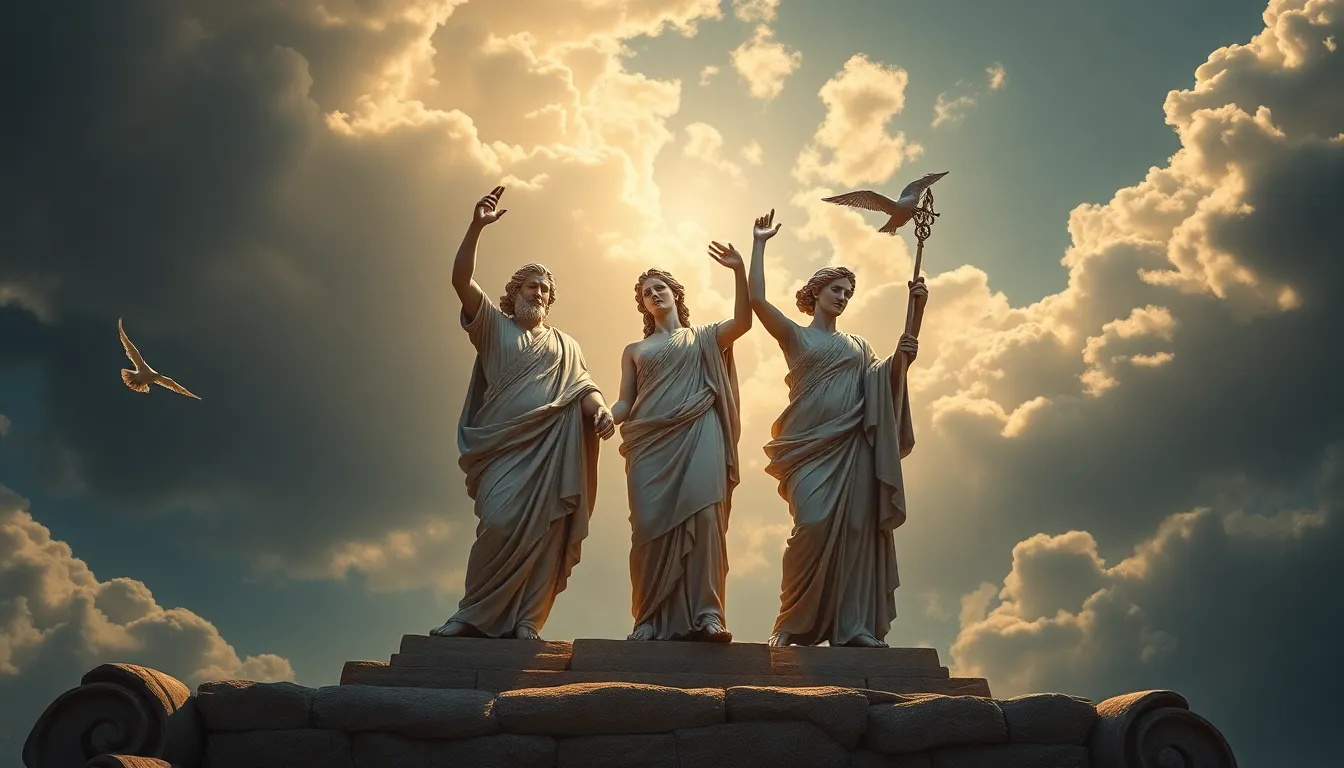The Muses in the Age of Social Media: New Platforms for Inspiration
I. Introduction
The Muses, in classical mythology, are the nine goddesses who represent the arts and sciences, serving as sources of inspiration for creative individuals throughout history. Each Muse oversees a different domain, such as poetry, music, or history, and has been a historical cornerstone for artists seeking inspiration.
In today’s world, social media has revolutionized the way creativity is expressed and shared. Platforms such as Instagram, TikTok, and Pinterest have become new-age canvases where inspiration flows freely, changing how artists and creators engage with their craft.
This article aims to explore the intersection of muses and social media, examining how these digital platforms serve as modern-day sources of inspiration and creativity.
II. The Evolution of Muses Through History
The concept of the muses has evolved significantly from ancient Greece to the present day. Traditional representations were often depicted in classical art and literature, embodying the ideals of inspiration and creativity.
- Historical Representations: Muses were often portrayed in paintings and sculptures, inspiring artists and writers through their ethereal presence.
- Changing Concepts: Over time, the idea of a muse has shifted from being a divine source of inspiration to a more personal and subjective interpretation, with many artists finding their muses in everyday life.
- Technology’s Role: Advancements in technology, including the printing press and later the internet, have continually reshaped how inspiration is accessed and shared.
III. Social Media as a Modern Muse
Today, social media platforms have emerged as powerful tools for discovering and sharing creative inspiration. Some of the most popular platforms include:
- Instagram: A visual platform where artists can showcase their work and connect with audiences.
- TikTok: A short-form video platform that encourages creativity through challenges and trends.
- Pinterest: A virtual pinboard that allows users to collect and share ideas across various interests.
These platforms have become sources of inspiration for creators in various fields:
- Visual artists find new styles and techniques.
- Writers discover prompts and themes through community engagement.
- Musicians collaborate and share snippets of their work in real-time.
Moreover, social media has democratized creativity, enabling anyone with internet access to express themselves and engage with a global audience.
IV. Case Studies: Creators Finding Inspiration Online
Many artists and influencers have leveraged social media to find inspiration and grow their creative practices. Here are a few notable examples:
- Lisa Congdon: An artist who uses Instagram to share her vibrant illustrations, often inspired by her daily experiences and interactions with her followers.
- Charli D’Amelio: A TikTok influencer who popularized various dance trends, inspiring countless creators to join in and create their versions.
- Pinterest Boards: Many artists curate boards filled with images that inspire their work, leading to innovative projects.
Viral trends, such as the #ArtChallenge on social media, have sparked numerous creative projects, showcasing the power of collective inspiration.
Testimonials from creators highlight the profound influence of social media on their artistic development:
- “I find inspiration in every scroll of my feed.” – Emerging artist.
- “Social media has connected me with other creatives I never would have met otherwise.” – Influencer.
V. The Role of Community in Creative Inspiration
Online communities play a crucial role in fostering creativity and collaboration among artists. Social media enables creators to:
- Share their work and receive constructive feedback.
- Collaborate on projects with like-minded individuals.
- Engage with audiences, fostering a sense of connection and support.
The impact of community engagement cannot be overstated; artists often find motivation and encouragement from their peers, leading to increased productivity and innovation.
VI. Challenges and Pitfalls of Seeking Inspiration Online
While social media can be a rich source of inspiration, it also presents challenges:
- Pressure of Comparison: The curated nature of social media can lead to feelings of inadequacy among creators as they compare their work to others.
- Distraction vs. Inspiration: The overwhelming amount of content can make it difficult to discern what is truly inspiring versus what is merely distracting.
- Mental Health Concerns: Prolonged social media use may lead to anxiety and burnout, impacting creativity negatively.
VII. Future Trends: The Evolution of Muses in the Digital Age
Looking ahead, the future of creativity in relation to social media is poised for further evolution:
- Emerging Platforms: New social media platforms will continue to shape how creative inspiration is shared.
- Technological Innovations: Advancements in AI and virtual reality may offer new avenues for creative expression and collaboration.
- Continued Adaptation: Creators will need to adapt to changes in technology and audience preferences to stay relevant and inspired.
VIII. Conclusion
The relationship between muses and social media is a dynamic and evolving narrative. As we explore new platforms for inspiration, it becomes evident that the spirit of the Muses lives on in modern creativity.
Creators are encouraged to embrace these new sources of inspiration, recognizing the potential for growth and connection that social media offers.
In this ever-changing creative landscape, adaptability remains paramount for artists seeking to thrive in the digital age.




